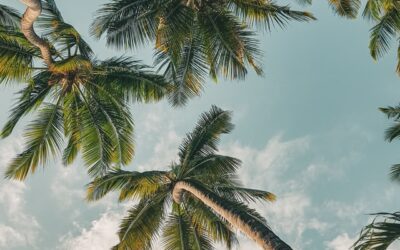Thengu or coconut trees are available in plenty and are the bounty of the Lakshadweep Islands. They are regarded as nature’s wealth for the islands. Coconut is central to island cuisine. For instance, the Kelanji made from rice flour and coconut milk or the dweep sharkara, a sweet dish are popular dishes that hinge on the coconut as a central ingredient. The tender coconut or chulale is often used to break the fasts held during the holy month of Ramzan. Islanders claim that the rich taste of their coconuts is due to the absence of artificial fertilizers and pesticides. Leaves such as mad, ila, keerani are used instead as fertilizers. Thengu flourish on the organic waste on the island. Coconut trees were important in the construction of house roofs in earlier times. The coconut husks were used in the making of chunnambu or lime. It is a resource that is tied to the islanders’ daily life. The coconut coir was the main import-export item from the islands. Women too are part of this story and lend their labour to copra-making and coir processing. The traveller Al Beruni wrote about the islands as belonging to part of a coir producing group that he called Diva Kanbar. Some scholars suggest that coir was the reason for the Portuguese invasion of the islands. Coconut trees are also tied to traditional land laws and their distribution on the islands. The land owning group called the Koyas also owned the coconut trees in uninhabited islands. They are said to have discriminated against Melacheris who were coconut climbers. In other words, the story of the thengu is one of social hierarchies and controls. However, this mighty thengu has a natural enemy in the form of the humble rat!
Thengu dots the islandscape. It is said that coconut trees were cultivated by earlier inhabitants from Kerala who migrated to Lakshadweep. It is said that the coconut trees can give a good yield and grow as thick as your hair if they are planted in an ideal location near the wells. The metaphor of head was used to symbolise coconut trees in order to denote the chopping of these trees for construction of roads etc- the island now looks bald-headed, they say. The leaves of coconut trees were used to make rooftops in olden days. There are several cuisines made of coconut and the tender ones are used to break open the fast in Ramzan as well as to make sweet snacks like the Phookuth. The husks of the coconut were used to light fires and in the making of limestone from coral rocks earlier. Coconut climbing and tapping of meera (the non fermented version) is one of the important livelihoods. This occupation was traditionally assigned to the Melacheri caste group. It was a common practice on the island to climb atop a coconut tree to send signals about the coming of cyclones, invaders or the return of islanders back home.
